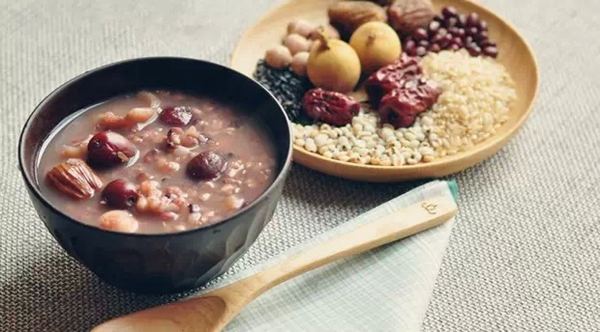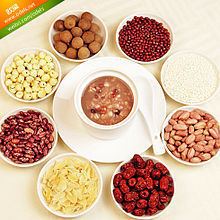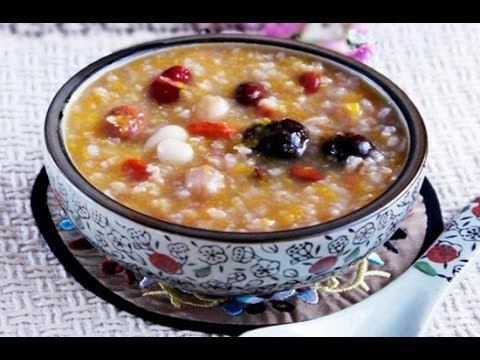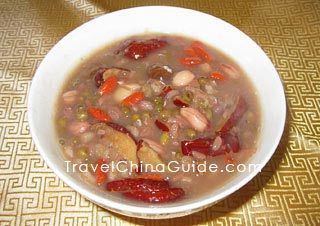 | ||
Main ingredients Many kinds of rice, beans, dried fruit, etc. Variations Variations depending on geographical regions in China Similar Laba garlic, Congee, Jujube, Foxtail millet, Lotus seed | ||
Laba congee
Laba congee (simplified Chinese: 腊八粥; traditional Chinese: 臘八粥; pinyin: làbāzhōu, also simplified Chinese: 八宝粥; traditional Chinese: 八寶粥; pinyin: bābǎozhōu) is a Chinese ceremonial congee dish eaten on the eighth day of the twelfth month in the Chinese calendar.
Contents

The day on which it is traditionally eaten is commonly known as the Laba Festival. The earliest form of this dish was cooked with red beans and has since developed into many different kinds. It is mainly made up of many kinds of rice, beans, peanuts, dried fruit, lotus seeds, etc. Depending on region-based variations in China, it can also include tofu, potato, meat and vegetables.

Laba congee ingredients
History
In the Han Dynasty, during the Laba Festival, people did not consume Laba congee as it was used for worshipping the gods. In the Northern and Southern Dynasties period, the date of the Laba Festival was fixed on the eighth day of the twelfth lunar month. In the Song Dynasty, Laba congee was widely consumed throughout China by not only the common people, but also government officials and aristocrats. In the Qing Dynasty, the Laba Festival was sometimes celebrated as the "Spring Festival", and Laba congee became even more popular. In the imperial court, the emperor and nobles gave Laba congee to the officials, servants, and others.
Legends
There are several legends in China about the origin of the Laba congee. Some of these legends are:

